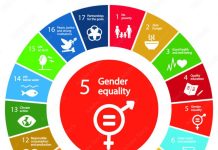By Dr Dost Barrech
The year 2023 marked a historic decade of the China-Pakistan Economic Corridor CPEC. Over a decade, CPEC played a catalyst role in expediting Pakistan’s economic growth, sustainable development and improved the soft image of the country. Conversely, Balochistan the largest province of Pakistan an area wise and smallest population wise remained deprived and marginalized since the inception of Pakistan. The questions arise here: will CPEC be a game changer for Balochistan too? Will it in a true sense transform the destiny of the deprived people of Balochistan?
The primary initiative in bringing connectivity and prosperity lies in building the “Golden Route” in western parts of Balochistan spreading almost 70 per cent of the province spanning from Gwadar, Turbat, Basima, Quetta and Zhob. The Golden Route is the shortest requires less land acquisition and is more resilient to climate change in terms of fog and floods. The route is sustaining Balochistan’s livelihood, 75 percent population reside in these regions. Annually 6 thousand people perish in tariff accidents in the province. The road fatalities exceed those resulting from terrorist incidents. The Golden Route is likely to reduce traffic accidents playing an effective role in underpinning Pakistan’s National Security Policy NSP emphasizing regional connectivity and extension of CPEC to Afghanistan and Central Asia. Arguably, land is abundant in Balochistan, if economic activities are accelerated province’s land will yield greater benefits. Balochistan comprises merely six per cent population of Pakistan, it can become a strength in poverty alleviation. Poverty alleviation is a main component of CPEC.
The agriculture sector is the key component of the province’s economy. Horticulture is the leading sub-sector within agriculture producing grapes and apples. Balochistan is called the “fruit basket of Pakistan”, producing 90 per cent of national products such as grapes, cherries and almonds 60 per cent of peaches, pomegranates, apricots 70 per cent of dates and 34 per cent of apples. The province also has 130 varieties of dates which could prove instrumental in earning foreign exchange through exports. CPEC should enable them to export fruits to the international market.
Livestock is a promising sector of Balochistan’s economy capitalizing on it under CPEC will stimulate the local economy. The province contributes 52.0%, 41.0%, and 22.0%, of the country’s sheep, camels, and goats respectively. It also contributes employment of nearly 66 per cent of households in the arid regions. Livestock appears to be a blessing in disguise in those regions which are unsuitable for cultivating crops. The sector holds an enormous potential to contribute nearly 50 per cent to the province’s agriculture GDP and more than 10 per cent of the overall Provincial GDP. Balochistan constitutes the country’s almost 40 per cent livestock population, and approximately 70 per cent population directly or indirectly is linked with this promising sector.
The socio-economic condition of 70 per cent of people is supposed to be improved under CPEC by investing massively in the sector bringing innovation in the industry and addressing issues of inaccessible veterinary services, insufficient water and fodder availability, proper marketing and inadequate grazing pastures. The fisheries sector possesses the potential to generate 70 per cent of local employment for the local people in the coastal areas of Balochistan. The sector is earning US$ 8 million by exporting fish products to the international market. Modernization of the fisheries sector under CPEC will lead to prosperity in poverty-stricken province.
Balochistan nearly has 750 km of coastal areas which require special attention to exploit the blue economy. The blue economy is produced by utilizing the potential of oceans. The province is endowed with non-living marine resources including shale gas, hydrocarbons and minerals, oil reserves and gravel. The available species in the Arabian Sea include cetaceans, fish, porpoises, sea turtles, and whales are great assets of the blue economy. Balochistan has the sixth world’s largest mangrove area believed to have been contributing US$ 4 billion to annual export earnings.
The scintillating sceneries in coastal areas of Balochistan are captivating. Under CPEC, the Building of Public Sector Development Programs (PSDP) near Makran Coastal Highway should generate immense economic opportunities. The sea beaches of Gwadar, Hammerhead, and Astola Island would promote tourism in the region. According to the World Travel & Tourism Council WWTC report “Travel & Tourism sectors contributed US$8.3 trillion to the global economy and supported 313 million jobs in 2017. The scintillating sceneries and historical sites of Balochistan need to encourage foreign and domestic tourists to visit these areas. The natural resources of the province including Copper, Gold, Oil, Black pearl, Chromite, Valuable Stones, and Natural Gas should be properly extracted under CPEC and giving due rights to the province would erode poverty and insurgency.
Recommendations
- The future of province lies in the eroding of political engineering and implementation of the 18th
- Pakistan’s National Security NSP policy fosters regional connectivity. Balochistan under CPEC serves as a crucial link for regional connectivity and NSP.
- Connectivity with Iran, Afghanistan and Central Asia will improve the GDP per capita of Balochistan and stimulate Pakistan’s trade with neighbouring countries.
- The small population of Balochistan is blessing in disguise. Making Special Economic Zones SEZs, harnessing indigenous potential under CPEC will alleviate poverty.
- Uncultivated 11.77 million acres of land in Balochistan need to be cultivated under CPEC.
- Balochistan is called the “fruit basket of Pakistan”, its fruits should be exported to the international market under the mega project.
- Pakistan needs to learn from China in modernizing the agriculture sector.
- Mehrgarh an archaeological site, located near the Bolan River Balochistan is the oldest civilization in Pakistan. Promoting tourism in Mehrgarh Balochistan under the Global Civilization Initiative led by China will create job opportunities and improve the soft power of Pakistan.
- Nearly 70 per cent of the province does not have access to electricity. Unavailability of electricity causes losses to agriculture sector. Formers’ reservations about the unavailability of electricity and load shedding ought to be addressed.
- Climate change poses a grave threat to agriculture sector. It is essential for China and Pakistan to foster climate diplomacy under CPEC in a bid to protect the infrastructure and agriculture sector of the province.
- China is the world’s largest importing market in the world. Pakistan should export natural resources, livestock and fruits of Balochistan to China.
- As the Balochi saying goes “God is God but sheep is sheep”. Historically people of Balochistan depended on the livestock sector. The sector needs to be modernized under CPEC.
- To improve the halal food supply in Balochistan, both federal and provincial governments promote access to credit and financing options for small-scale farmers to invest in livestock improvements.
- In order to project mangroves both federal and provincial governments need to establish and enforce protected areas and marine reserves to safeguard mangrove habitats from illegal logging, development, and pollution.
- Special universities be built under CPEC in Balochistan.
- The Youth of Balochistan expect immensely from CPEC, providing ample Chinese scholarships to them will enable them to adapt themselves according to the 21st century.
- Seminars on CPEC are held in Islamabad and other metropolitan cities of Pakistan. Those voices do not represent the genuine voices of Balochistan. It is necessary to hold seminars and conferences on CPEC in Balochistan and Quetta to hear the real voices of the voiceless.
Conclusion
The year 2023 marked a successful decade of CPEC. The mega project is termed as a game changer for Pakistan. Gwadar and Balochistan are a starter of the megaproject. The province should have a greater share given its geo-strategic location, vast area and natural resources. As the saying goes “nearer to the church farther from God”. Over a decade, there have not been ample economic dividends that exacerbated the socio-economic condition of the impoverished masses. The policymakers need to ponder over the untapped potential of Balochistan. The future of Pakistan and Balochistan lies in the success of CPEC. It is not an exaggeration to say that Balochistan is a nervous system of Pakistan. It necessitates special attention under CPEC.
Dr Dost Barrech teaches International Relations IR at the University of Balochistan, Quetta, Pakistan. Barrech also served as a Research Associate at the Institute of Strategic Studies Islamabad ISSI. He can be reached at bareach87@gmail.com






